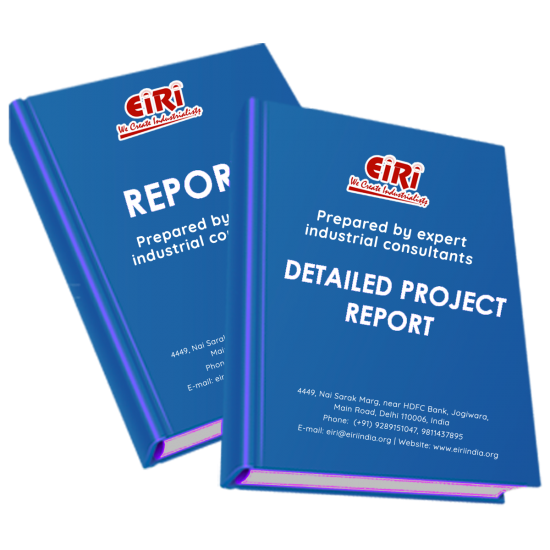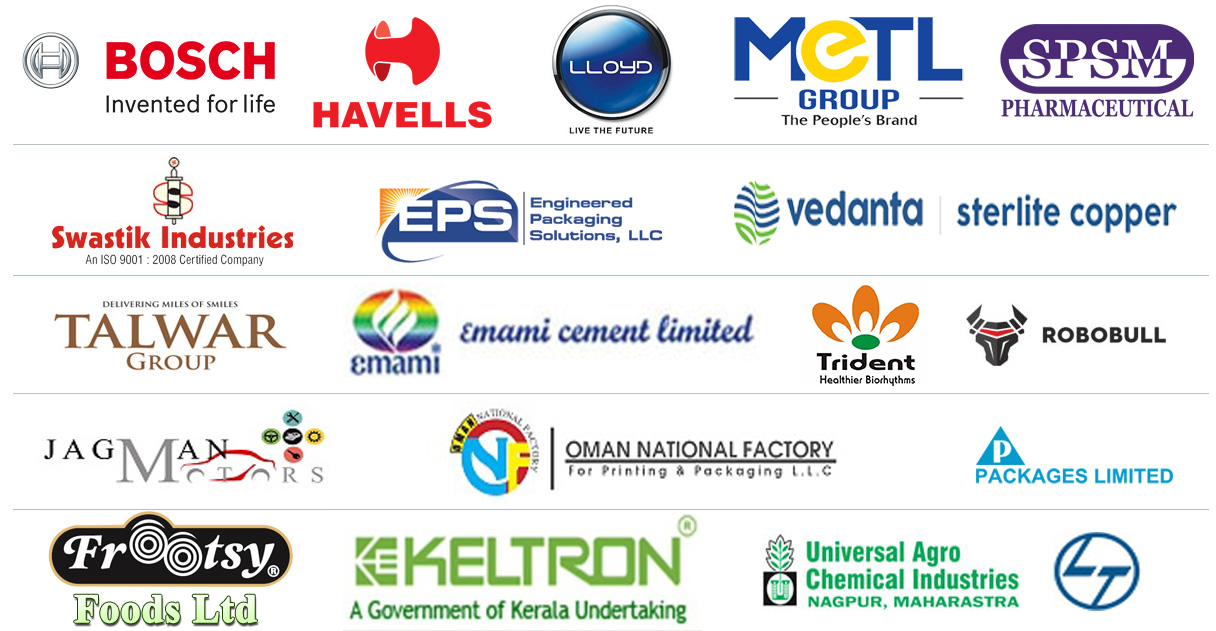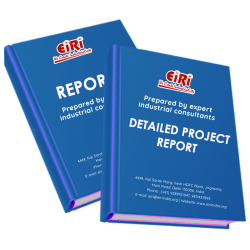Detailed Project Report on leather processing unit

- More than 45 years of experience
- Managed by expert industrial consultants
- ISO 9001-2015 Certified
- Registered under MSME, UAM No: DL01E0012000
- 24/5 Research Support
Get your quesries resolved from an industry expert. Ask your queries before report or book purchase. - Custom Research Service
Speak to the our consultant to design an exclusive study to serve your research needs. - Quality Assurance
All reports are prepared by highly qualified consultants & verified by a panel of experts. - Information Security
Your personal & confidential information is safe & secure.
LEATHER PROCESSING UNIT
[CODE NO.3923]
Leather is a material created through the tanning of hides and skins of animals, primarily cattle hide. The tanning process converts the putrescible skin into a durable, long-lasting and versatile natural material for various uses.
Leather is an important material with many uses. Together with wood, leather formed the basis of much ancient technology. The leather industry and the fur industry are distinct industries that are differentiated by the importance of their raw materials. In the leather industry the raw materials are by-products of the meat industry, with the meat having higher value than the skin. The fur industry uses raw materials that are higher in value than the meat and hence the meat is classified as a by-product. Taxidermy also makes use of the skin of animals, but generally the head and part of the back are used. Hides and skins are also used in the manufacture of glue and gelatin.
Tanning is effected by treating the conditioned hides and skins with organic, inorganic or synthetic tanning agents, the most important among them being vegetable tanning materials and basic chromium sulphate. Basic salt of aluminium, Zirconium, and iron, formaldehyde, quinone, aliphatic sulphonyl chlorides, fish oils, and synthetic polymerized materials (Syntans) are used for the production of special leathers. Tanning is an ancient art practiced in India since long before the Christian era. Up to about 1857, the Indian leather industry remained a cottage industry confined mostly to the villages. The production of semi-finished leather for export was started in South India at about that time. In 1867, the Government established the Government Harness & Saddlery Factory at Kanpur to produce vegetable tanned leather by process followed in England. In 1881, another factory, cooper, Allen and Co. was set up at Kanpur to produce vegetable tanned leather required for military footwear. Experimented trials on the production. One of chrome tanned leather were started at Madras towards the beginning of the present Century and a course of instruction in chrome tanning was introduced in the Government School of Arts, Madras. Students trained in this institution started chrome tanneries in Chennai, Kolkata and Kanpur.
COST ESTIMATION
Plant Capacity 200 SQ.MTR/DAY
Land & Building (2000 sq.ft.) Rs. 2.70 Cr
Plant & Machinery Rs. 3.00 Cr
Working Capital for 2 Month Rs. 77.96 Lac
Total Capital Investment Rs. 6.65 Cr
Rate of Return 22%
Break Even Point 59%
INTRODUCTION
USES AND APPLICATION
TANNED AND HALF-TANNED LEATHER ARE USED FOR:
TYPES OF LEATHER
LEATHER TYPES
IN GENERAL, LEATHER IS SOLD IN THREE FORMS:
OTHER LESS-COMMON LEATHERS INCLUDE:
THE FOLLOWING ARE NOT 'TRUE' LEATHERS, BUT CONTAIN LEATHER
MATERIAL.
B.I.S. SPECIFICIFICATION
RAW MATERIALS
CLASSIFICATION OF HIDES AND SKINS
IN THE CASE OF CATTLE HIDES:
MARKET OVERVIEW OF LEATHER INDUSTRY IN INDIA
STRENGTHS OF INDIAN LEATHER SECTOR
EMERGING STRENGTHS
HIGHLIGHTS OF PRODUCT SEGMENTS OF INDIAN LEATHER
AND FOOTWEAR INDUSTRY
INDIA’S EXPORT OF LEATHER & LEATHER PRODUCTS FOR 5 YEARS
% SHARE OF LEATHER & LEATHER PRODUCTS FY 2018-19
MAJOR MARKETS:
% SHARE OF INDIA’S EXPORTS OF LEATHER & LEATHER PRODUCTS
IN TOP 12 COUNTRIES IN US $ MN FY 2018-19
INDIA’S EXPORT OF LEATHER & LEATHER PRODUCTS TO VARIOUS
COUNTRIES FOR LAST 5 YEARS.
FUTURE OUTLOOK:-
SEQUENCES IN LEATHER PROCESSING
CURING
SOAKING
PAINTING
LIMING
FLESHING
DELIMING
BATING
PICKLING
DEGREASING
TANNING
MINERAL TANNAGES
ALDEHYDE AND OIL TANNAGES
VEGETABLE TANNAGES
SPLITTING
SHAVING
NEUTRALISATION
DYEING
FATLIQUORING
SAMMING
SETTING OUT
FINAL DRYING
STAKING AND DRY DRUMMING
BUFFING AND BRUSHING 41
FINISHING 41
FINAL GRADING
MEASUREMENT
UNIT OPERATION IN LEATHER PROCESSING
LEATHER PROCESS FLOW DIAGRAM
PRE-TANNING OPERATIONS
SOAKING
LIMING
DELIMING
BATING
PICKLING
DEGREASING
TANNING PROCESS
CHROME TANNING
VEGETABLE TANNING PROCESS
POST-TANNING OPERATIONS
RECHROMING OF WET BLUE LEATHERS
NEUTRALISATION
RETANNING
DYEING
FATLIQUORING
FINISHING
STEPS IN LEATHER TANNING AND DRY FINISHING PLANT
LIMING-
DELIMING:
BATING:
PICKLING:
TANNING:
NEUTRALIZATION
RETAINING:
DYEING:
FAT LIQUORING:
DRYING:
FINISHING:
LEATHER TANNING AND FINISHING PROCESS
HIDE AND SKIN PRESTORAGE / STORAGE, AND BEAMHOUSE OPERATIONS
SORTING AND TRIMMING
CURING AND STORING
SOAKING
DEHAIRING AND LIMING OF BOVINE HIDES
PAINTING AND LIMING OF SHEEPSKINS
FLESHING
TANYARD OPERATIONS
DELIMING
BATING
DEGREASING
PICKLING
WET-WHITE PRETANNING
TANNING
DRAINING, SAMMING, AND SETTING
SPLITTING
SHAVING
POST-TANNING OPERATIONS
NEUTRALIZATION
BLEACHING
RETANNING
DYEING
FATLIQUORING
DRYING
FINISHING OPERATIONS
MECHANICAL FINISHING PROCESSES
SURFACE COAT APPLICATION
DIFFERENT STAGES IN LEATHER TANNING
PREPARATORY STAGES
TANNING
CRUSTING
SURFACE COATING
PROCESS FLOW DIAGRAM FOR LEATHER PROCESSING
WASTE CHARACTERISTICS, POLLUTION PREVENTION AND CONTROL
THE TANNING AND FINISHING PROCESS GENERALLY CONSISTS OF:
WASTE CHARACTERISTICS
POLLUTION PREVENTION AND CONTROL
TARGET POLLUTION LOADS
TABLE. TARGET LOADS PER UNIT OF PRODUCTION
TREATMENT TECHNOLOGIES
TABLE. EFFLUENTS FROM TANNING AND LEATHER FINISHING PROCESSES
LEATHER PRODUCTION PROCESSES
ROLE OF ENZYMES IN LEATHER PRODUCTION
PRESERVATION AND CONDITIONING OF LEATHER
MANUFACTURING PROCESS OF FINISHED LEATHER
PROCESS IN DETAILS
PHYSICAL CHECK UP OF THE STOCK
2. SOAKING
B) SOAKING OF COW-SKINS:
B) SOAKING OF HEAVY HIDES:
C) SOAKING OF DRIED SKIN:
3. UNHAIRING
A) UNHAIRING OF COW SKINS:
B) UNHAIRING OF GOAT SKINS:
C) HEAVY HIDES:
4. BATING
5. PICKLING
6. THE TANNING PROCESS
7. FINISHING:
A) PRESSING:
B) COLOURING:
DYEING:-
ACID & DIRECT DYES
PRACTICAL PROCESSES
(1) GLAZED KID SKINS
(2) SEMI-CHROME GLAZED SKINS
(3) CLOTHING SUEDES
CHEMICALS & THEIR COMPOSITIONS USED IN DIFFERENT SECTIONS
& OTHER OPERATIONS IN BRIEF
1. SOAKING
2. LIMING
3. RELIMING
4. DELIMING
5. PICKLING
6. CHROME TANNING
7. TREATMENT WITH LADDER LINK :-
8. RETANNING
9. NEUTRILIZATION
10. DYEING AND FATLIQUORING
SEASON IS PREPARED WITH -
NOW THESE ARE AGAIN SPRAYED WITH FOLLOWING SOLUTION
TANNING AND OTHER OPERATION FOR FINISHED LEATHER
THE TANNING PROCESS
PREPARATION OF THE RAW PELT FOR TANNING
SOAKING 105
UNHAIRING AND LIMING
DELIMING AND BATING
PICKLING
PRETANNING, TANNING AND RETANNING
TANNING
MECHANICAL OPERATIONS
NEUTRALISATION
RETANNING
DYEING, FATLIQUORING AND DRYING
DYEING
FATLIQUORING
DRYING
FINISHING
DIFFERENT TREATMENT OF HIDES FOR FINISHED LEATHER
POLLUTION EFFECTS
TABLE - VOLUME & CHARACTERISTICS OF WASTES
TABLE- CHARACTERISTIC OF COMPOSITE EFFLUENTS ALL VALUES IN
MG/LITRE EXCEPT FOR PH
EFFLUENT
TREATMENT METHODS
A. RECOVERY MATERIALS:
B. PROCESS CHANGES
C. FINAL TREATMENT:
OPERATING CONDITIONS FOR CHROMETANNING
SOAKING
LIMING:
DELIMING:
SAVING IN CHEMICALS AND WATER IN DELIMING
CHROME TANNING
EFFLUENT TREATMENT IN TANNERY
EFFLUENT TREATMENT
FIGURE. TANNERY EFFLUENT TREATMENT SYSTEM
SOURCES: CENTRAL LEATHER RESEARCH INSTITUTE, CHENNAI.
AIR EMISSIONS
TABLE : SOURCES OF AIR EMISSIONS AND PREVENTIVE METHODS
TABLE ODOUR EMISSIONS TO AIR
SOLID WASTE
HAZARDOUS MATERIALS
FLOW DIAGRAM OF COMPLETE TANNING PROCESS
SUPPLIERS OF RAW MATERIALS
SUPPLIERS OF RAW HIDES 132
SUPPLIERS OF SODIUM SULPHIDE
SUPPLIERS OF SODIUM CHLORIDE
SUPPLIERS OF AMMONIUM CHLORIDE
SUPPLIERS OF BASIC CHROMIUM SULPHATE
SUPPLIERS OF ANIONIC WETTING AGENT
SUPPLIERS OF SULPHURIC ACID
SUPPLIERS OF PLANT AND MACHINERIES
SUPPLIERS OF SOAKING DRUMS
SUPPLIERS OF LEATHER PRESSING MACHINE
SUPPLIERS OF TRIMMING MACHINE
SUPPLIERS OF BUFFING MACHINE
SUPPLIERS OF BOILERS
SUPPLIERS OF EFFLUENT TREATMENT PLANT
SUPPLIERS OF MATERIAL HANDLING EQUIPMENTS
SUPPLIERS OF MEASURING & TESTING EQUIPMENTS
SUPPLIERS OF EMBOSSING MACHINE
PLANT AND MACHINERY SUPPLIERS (IMPORTED)
APPENDIX – A:
01. PLANT ECONOMICS
02. LAND & BUILDING
03. PLANT AND MACHINERY
04. OTHER FIXED ASSESTS
05. FIXED CAPITAL
06. RAW MATERIAL
07. SALARY AND WAGES
08. UTILITIES AND OVERHEADS
09. TOTAL WORKING CAPITAL
10. TOTAL CAPITAL INVESTMENT
11. COST OF PRODUCTION
12. TURN OVER/ANNUM
13. BREAK EVEN POINT
14. RESOURCES FOR FINANCE
15. INSTALMENT PAYABLE IN 5 YEARS
16. DEPRECIATION CHART FOR 5 YEARS
17. PROFIT ANALYSIS FOR 5 YEARS
18. PROJECTED BALANCE SHEET FOR (5 YEARS)
How to Make Project Report?
Detailed Project Report (DPR) includes Present Market Position and Expected Future Demand, Technology, Manufacturing Process, Investment Opportunity, Plant Economics and Project Financials. comprehensive analysis from industry covering detailed reporting and evaluates the position of the industry by providing insights to the SWOT analysis of the industry.
Each report include Plant Capacity, requirement of Land & Building, Plant & Machinery, Flow Sheet Diagram, Raw Materials detail with suppliers list, Total Capital Investment along with detailed calculation on Rate of Return, Break-Even Analysis and Profitability Analysis. The report also provides a birds eye view of the global industry with details on projected market size and then progresses to evaluate the industry in detail.
We can prepare detailed project report on any industry as per your requirement.
We can also modify the project capacity and project cost as per your requirement. If you are planning to start a business, contact us today.
Detailed Project Report (DPR) gives you access to decisive data such as:
- Market growth drivers
- Factors limiting market growth
- Current market trends
- Market structure
- Key highlights
Overview of key market forces propelling and restraining market growth:
- Up-to-date analyses of market trends and technological improvements
- Pin-point analyses of market competition dynamics to offer you a competitive edge major competitors
- An array of graphics, BEP analysis of major industry segments
- Detailed analyses of industry trends
- A well-defined technological growth with an impact-analysis
- A clear understanding of the competitive landscape and key product segments
Need Customized Project Report?
- Ask for FREE project related details with our consultant/industry expert.
- Share your specific research requirements for customized project report.
- Request for due diligence and consumer centric studies.
- Still haven't found what you're looking for? Speak to our Custom Research Team
About Engineers India Research Institute:
Note: We can also prepare project report on any subject based on your requirement and country. If you need, we can modify the project capacity and project cost based on your requirement.
Our Clients

Our Approach
- Our research reports comprehensively cover Indian markets (can be modified as per your country), present investigation, standpoint and gauge for a time of five years*.
- The market conjectures are produced on the premise of optional research and are cross-accepted through associations with the business players
- We use dependable wellsprings of data and databases. What's more, data from such sources is handled by us and incorporated into the report
Why buy EIRI reports?
- Our project reports include detailed analysis that help to get industry Present Market Position and Expected Future Demand.
- Offer real analysis driving variables for the business and most recent business sector patterns in the business
- This report comprehends the present status of the business by clarifying a complete SWOT examination and investigation of the interest supply circumstance
- Report gives investigation and top to bottom money related correlation of real players/competitors
- The report gives gauges of key parameters which foresees the business execution






















